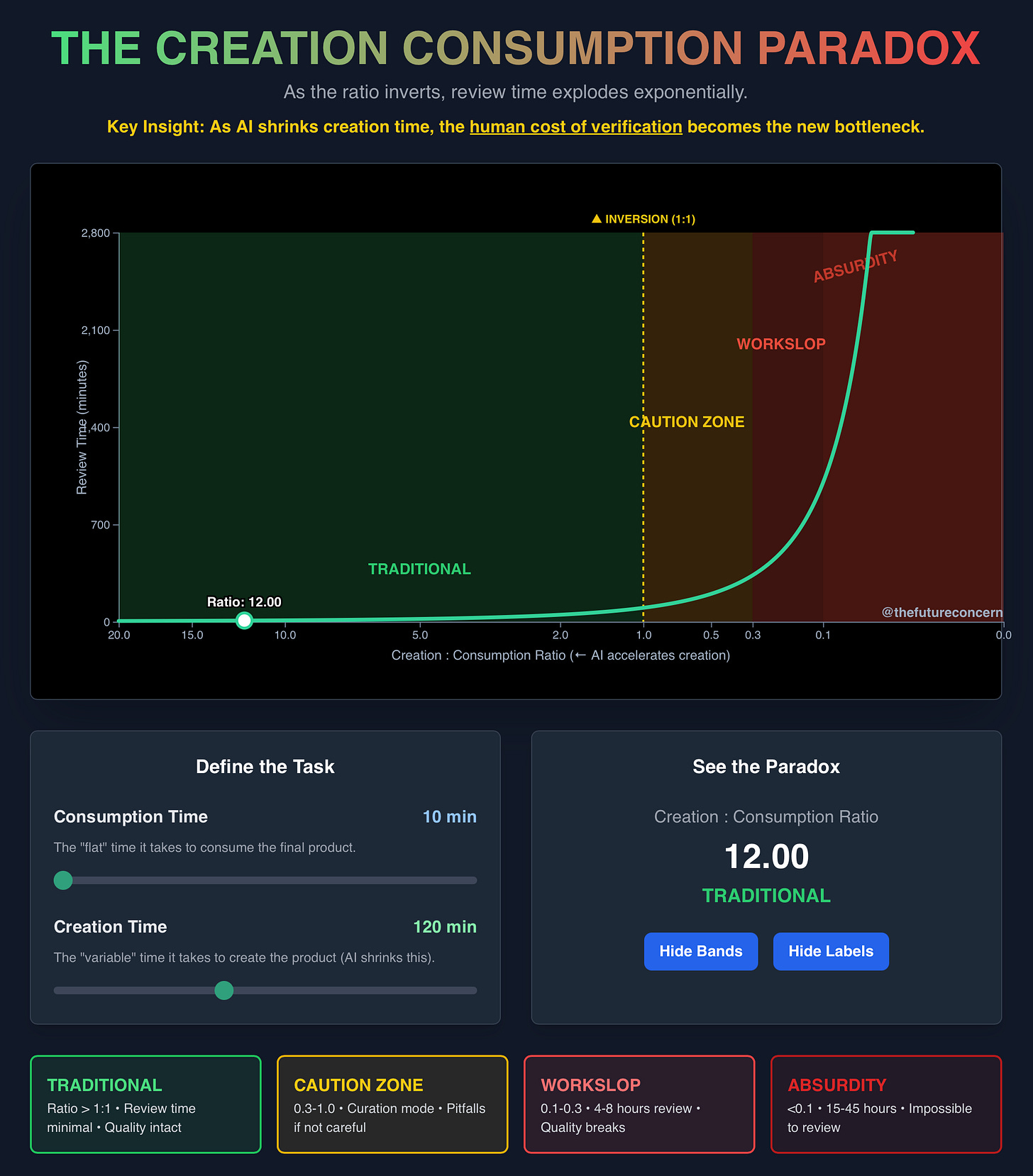Entering The Creation-Consumption Paradox
When we create faster than we consume, things get weird
Generative AI has ushered in many changes in just a few short years, and the rapid pace of change has left us without the necessary frameworks of understanding or language to describe how different creating and consuming in an AI world has become.
When we can create so quickly with generative AI, it creates unintended consequences, one of which I call the Creation-Consumption Paradox.

For all of human history, it’s taken just as long if not longer (in most cases, much longer) to create something than it has to consume it. Writing, painting, making music - all acts of human creativity - and I’m using creativity here to mean much more than artistic expression, it refers to anything at all that we create, from pottery to cuneiform records on clay tablets to manuscripts written on a typewriter to Hollywood movies - have taken longer to create the thing than it’s taken to consume said thing.
But with the advent of generative AI, we’re able to create things in less time than it takes to consume or review them, and it’s only accelerating across different media types and formats. What does this mean? It turns out it breaks something fundamental in the way we create and consume, whether it’s creating something and consuming it as part of the review process, or creating it and sending it out to others to consume.
To understand this, I created a metric called the Creation-Consumption Ratio. You simply take the amount of time it takes to create something and divide it by the amount of time it takes to consume it. Traditionally you would get a number greater than 1 - usually much greater. Imagine a novel takes 12 months to write but only 2 weeks to read. That would be a Creation Consumption Ratio of 12/.5 = 24, which is a pretty healthy ratio.In some rare occasions you might be at 1, but we’ve never been below 1. Until now.
💡Creation Time/Consumption Time = Creation-Consumption Ratio (CCR)
Once we consistently create things faster than we can consume (or review) them, the Creation-Consumption Ratio drops below 1. It inverts - and weird things start happening, which is why I call it the Creation-Consumption Paradox.
I made this interactive graph which helps visualize the concept. Once the ratio inverts and becomes less than 1, we’re in the Paradox. Move the sliders around to see how the ratios change based on the creation time vs the consumption time.
I’ve divided the range of CCRs in the graph into 4 distinct zones. Everything to the right of the 1:1 barrier is technically inside the paradox.
Substack won’t let me embed this into the article, but here’s a picture and a link in case you want to play around with it yourself.
Creation-Consumption Paradox Interactive Chart
When CCR < 1 but above .3 or so, that’s what I call the CAUTION ZONE. Depending on what you’re doing, this is where you’re seeing major productivity gains because of AI use. Vibe coding lives in this zone, but a review debt begins building up the farther things get pushed.
Between 0.3 and 0.1 is where I believe the majority of Workslop happens - this is because instead of writing and creating, the main task when working with generative AI becomes editing. And you’re suddenly generating so much text that must be reviewed and edited in such a short period of time that it becomes incredibly difficult. My theory here is that people become slightly overwhelmed and just give the outputs a quick once-over before submitting, not realizing that while the output looks good at a glance, it’s actually riddled with errors, hallucinations, or obvious AI language.
And lastly we get to the ABSURDITY ZONE, which is the far reaches of the Paradox. Here is where I think everything truly breaks down. Let’s say someone is generating an entire movie with AI in 5 minutes. It still takes you 90 minutes to watch the movie - making it an increasingly unappealing review/creation burden.
Have you felt the Paradox in action? If so, let me know! And please don’t forget to sign up for Robot Storytime’s list and join the ranks of the curious but skeptical when it comes to all things tech and the future.



